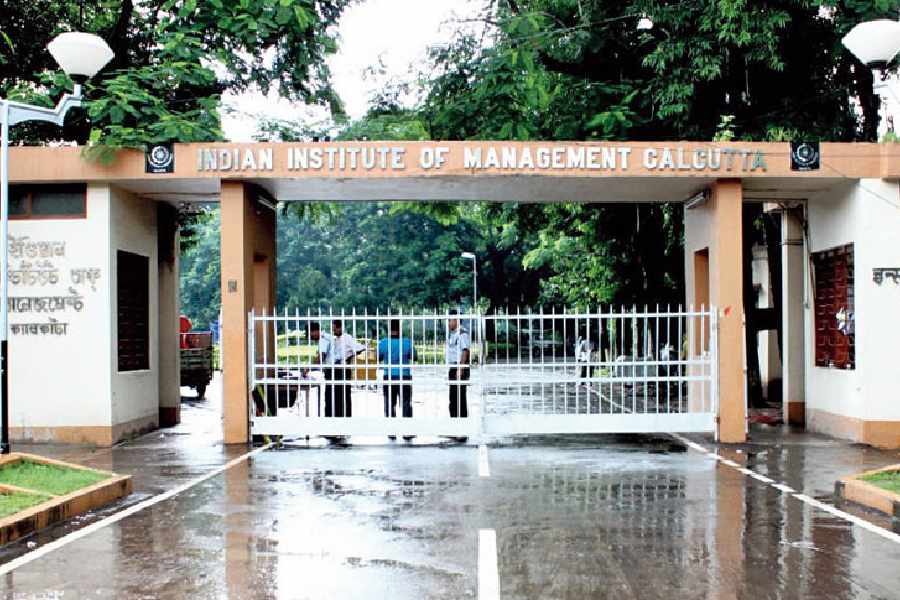 |
| John Sulston (left) and Robert Horvitz. (AFP) |
Stockholm, Oct. 7 (Reuters): Three scientists, whose studies of a tiny worm shed new light on killer diseases such as AIDS and cancer, won the 2002 Nobel Medicine Prize today.
Sydney Brenner and Sir John Sulston of Britain and Robert Horvitz of the US share the $1 million prize for work on how genes regulate organ development and cell death, said Sweden’s Karolinska Institute, which awards the prize.
Programmed cell death — or “cell suicide” — is a natural and necessary process in which billions of cells die every day while a similar number of new ones are created to allow the body and the nervous system to develop.
But in some diseases, such as AIDS, cells are lost due to excessive cell death, while others like cancer reflect a slowdown of this natural cell death. This means that cells — including cancer cells — that would usually die, survive.
“Knowledge of programmed cell death has helped us to understand the mechanisms by which some viruses and bacteria invade our cells,” the institute said. “We also know that in AIDS, neurogenerative diseases, stroke and myocardial infarction (heart attack), cells are lost as a result of excessive cell death.”
Researchers, including those focusing on cancer, are now investigating programmed cell death, and many treatments are based on manipulation of the cellular “suicide programme”.
Sten Orrenius, professor of toxicology at the Karolinska Institute, said knowledge of how to stop cell suicide could help prevent the spread of deadly diseases such as ebola, a haemorrhagic fever which has no known cure or vaccine. “I think within five years we could see medicine, based on this principle, for myocardical infarction and blood poisoning,” he said.
Brenner, 75, Sulston, 60, and Horvitz, 55, worked on the roundworm — a primitive animal only one millimetre long — to look into how genes control animal development and cell death.
It was Brenner who realised that the transparent worm’s simple structure made it ideal for research. Brenner, born in South Africa, started to study the worm in the 1960s and showed that different mutations in its body could be linked to specific genes and effects on development.
Sulston extended Brenner’s work, describing the visible steps of the cell death process and demonstrating the first mutations of genes that took part in the process.
Sulston also sequenced the worm’s genome or its genetic blueprint in 1998, the first time a living animal’s genes had been mapped — akin to creating a geographical atlas or coded instructions needed to make the animal. From 1992 to 2000, he headed the Sanger Centre in Cambridge, the British unit of a global team mapping the human genome.
Sulston is one of the scientists demanding that the genetic blueprint should be freely available, calling genome sequencing for commercial gain “totally immoral and disgusting”.
Tall, white-haired and bearded, the unassuming scientist was knighted in 2001.
Sulston was at his desk at the Sanger Centre when he received news of the award.
”He is absolutely delighted and thrilled,” said Don Powell, a spokesman for the Institute.
”It is tremendously exciting for him and for the worm community, which has been a co-operative community and one which has been founded upon the sharing of data,” he added.
Horvitz used the worm to study whether there was a genetic programme controlling cell death. He identified certain“death genes” and showed they were a prerequisite for cell mortality.
”I would find nothing more gratifying (than if) one or more of my discoveries led to cures for... human diseases. That's the dream,” he said.
Horvitz believed no such treatments were being used today but many pharmaceutical companies are using major scientific discoveries in their work to make treatments for human diseases.
In 1996, Brenner founded the Molecular Sciences Institute in California, combining genome study with computer modelling.
”I don't want to retire to play golf,” he said in an interview last year.“Science is one's hobby and one's work and one's pleasure.” (additional reporting by Karin Lundback and Greg Frost)










